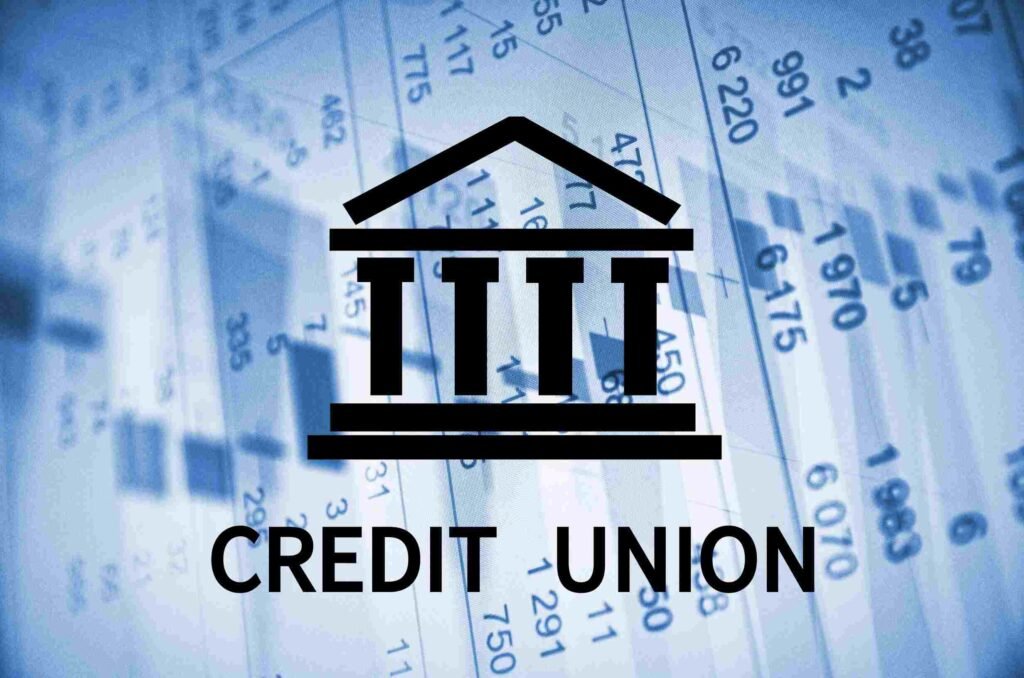Email marketing remains one of the most effective tools for engaging with your audience and driving conversions. With the right strategies, you can turn your email campaigns into powerful engines of growth. This article explores actionable and strategic email marketing techniques to help you boost engagement and conversion rates.
Building a Quality Email List
Building a quality email list is essential for any email marketing strategy, especially for startup founders looking to maximize engagement and conversion rates. A high-quality email list ensures that your messages reach an audience genuinely interested in your offerings, leading to better open rates, click-through rates, and ultimately, conversions.
Strategic List Building Techniques
Content Upgrades
One of the most effective ways to grow your email list is by offering content upgrades. These are bonus content pieces that complement your existing blog posts or articles. For instance, if you have a blog post about email marketing tips, offer a downloadable checklist or e-book as an additional resource. To access this valuable content, visitors must provide their email addresses, thereby joining your list.
Webinars and Online Events
Host webinars and online events on topics relevant to your audience. Promote these events through various channels, and require attendees to register with their email addresses. Webinars not only provide valuable information to your audience but also position you as an expert in your field, making attendees more likely to engage with your future emails.
Lead Magnets
Create compelling lead magnets that address a specific pain point or interest of your target audience. These could include e-books, whitepapers, templates, or exclusive access to tools and resources. Promote these lead magnets across your website, social media, and other marketing channels to attract subscribers.
Advanced Segmentation Strategies
Behavioral Segmentation
Segment your email list based on subscriber behavior, such as website interactions, email engagement, and purchase history. For example, if a subscriber frequently visits your pricing page but hasn’t made a purchase, you can send targeted emails with case studies, testimonials, or special offers to encourage conversion. Behavioral segmentation ensures that your emails are relevant and timely, increasing the likelihood of engagement.
Lifecycle Segmentation
Segment your email list according to where subscribers are in their customer journey. New subscribers might receive a welcome series that introduces your brand and offers helpful resources, while long-term customers could receive loyalty rewards or exclusive updates. Tailoring your content to different stages of the customer journey helps maintain engagement and build stronger relationships.
Interest-Based Segmentation
Use interest-based segmentation to send highly targeted content. When subscribers sign up, ask them to indicate their areas of interest or preferences. For instance, if you run a fitness blog, you could ask subscribers to choose between nutrition, workout routines, or wellness tips. By sending content that aligns with their interests, you increase the relevance and engagement of your emails.
Leveraging Partnerships and Collaborations
Cross-Promotions
Partner with complementary businesses or influencers to cross-promote each other’s email lists. For example, if you sell fitness equipment, collaborate with a nutritionist who offers meal plans. Both parties can promote each other’s lead magnets or webinars, providing mutual benefits and expanding your reach to new, relevant audiences.
Guest Blogging and Media Appearances
Write guest posts for popular blogs or websites in your industry, and include a link to your lead magnet or newsletter signup. Similarly, seek opportunities for media appearances or podcast interviews where you can discuss your expertise and direct listeners to your email signup page. These efforts help establish credibility and attract subscribers interested in your content.
Referral Programs
Implement a referral program that encourages your existing subscribers to refer new ones. Offer incentives such as discounts, exclusive content, or entry into a giveaway for each successful referral. Referral programs leverage the trust and networks of your current subscribers, helping you grow your list organically.
Maintaining and Engaging Your List
Regularly Update Content Offers
Keep your content offers fresh and relevant by regularly updating your lead magnets, webinars, and other signup incentives. Monitor industry trends and subscriber feedback to ensure your offers align with current interests and needs. Regular updates keep your email list growing and engaged.
Personalized Welcome Series
A personalized welcome series can set the tone for your relationship with new subscribers. Beyond a simple welcome email, create a series of emails that introduce your brand, highlight your best content, and offer exclusive insights or deals. Personalization can include addressing the subscriber by name and tailoring content based on their interests or signup source.
Engagement Campaigns
Run engagement campaigns to re-engage inactive subscribers. Use a mix of valuable content, special offers, and surveys to rekindle their interest. If subscribers remain inactive after multiple attempts, consider removing them from your list to maintain list hygiene and ensure better deliverability rates for your engaged subscribers.
By implementing these advanced and strategic list-building techniques, startup founders can create a robust and engaged email list. Focus on providing value, personalizing experiences, and continuously optimizing your approach to attract and retain high-quality subscribers, ultimately driving better engagement and conversions.
Keep it Short and Sweet
Keeping your subject lines short and sweet is crucial for capturing your audience’s attention and encouraging them to open your emails. This approach is especially strategic for startup founders who need to maximize the impact of their email marketing efforts with limited resources. Here are some advanced strategies to enhance this tactic:
Strategic Brevity
Mobile Optimization
With a significant portion of emails being opened on mobile devices, it’s essential to ensure your subject lines are fully visible on smaller screens. Aim for subject lines that are around 6-8 words or 30-50 characters. This length is ideal for mobile users, ensuring they see the entire message at a glance without it being cut off.
Highlighting Key Benefits
Focus on the primary benefit or most compelling aspect of your email content. Startup founders should identify the most attractive value proposition and encapsulate it in a few powerful words. For example, if you’re offering a free trial or an exclusive discount, make sure that’s clear immediately.
Utilizing Power Words
Action-Oriented Language
Incorporate action-oriented words that prompt immediate response. Words like “Discover,” “Unlock,” “Exclusive,” and “Limited” can create a sense of urgency and curiosity. These words are strategic because they motivate the reader to take immediate action, which is critical for startups trying to convert interest into tangible results.
Emotional Triggers
Use words that evoke emotions, such as “Exciting,” “Amazing,” “Essential,” and “Proven.” Emotional triggers can significantly increase open rates because they resonate on a personal level. For startups, leveraging emotional language can help build a stronger connection with your audience and make your brand more memorable.
Personalization Tactics
First Name Inclusion
Include the recipient’s first name in the subject line to grab their attention. Personalized subject lines can increase open rates by making the email feel more relevant and tailored. For example, “John, Unlock Your Exclusive Offer Today” is more engaging than a generic subject line.
Behavioral Insights
Leverage data on subscriber behavior to create subject lines that reflect their interests and past interactions with your brand. For example, if a subscriber frequently browses a particular category on your website, a subject line like “Exclusive Deals on [Category] Just for You” can be highly effective.
Leveraging Urgency and Scarcity
Time-Sensitive Offers
Incorporate deadlines or time-sensitive phrases to create a sense of urgency. Phrases like “Ends Tonight,” “Limited Time Offer,” or “Only a Few Left” can prompt immediate action. For startups, this strategy is particularly useful for driving quick conversions and creating buzz around new products or promotions.
Exclusive Availability
Highlight the exclusivity of your offer. Phrases like “Members Only,” “Exclusive Access,” or “For Our VIPs” can make recipients feel special and valued. This approach is strategic for startups looking to build a loyal customer base and foster a sense of community around their brand.
Simplifying Complexity
Clarity Over Cleverness
While creative subject lines can be intriguing, clarity should always take precedence. Ensure that your subject line clearly communicates the main benefit or purpose of the email.
This straightforward approach reduces the risk of confusion and increases the likelihood of the email being opened.
Avoiding Jargon
Steer clear of industry jargon or overly complex language. Use simple, everyday words that are easy to understand. This is especially important for startups that need to communicate their value propositions quickly and effectively to a broad audience.
By keeping your subject lines short and sweet, and employing these advanced strategies, startup founders can enhance their email marketing efforts, ensuring that their messages are not only seen but also acted upon.
This approach helps maximize engagement and conversion rates, driving the growth and success of your business.
Designing Engaging Email Content
Once your email is opened, the content needs to capture and hold your reader’s attention. Well-designed and relevant content can drive engagement and conversions.
Clear and Compelling Copy
Write clear and compelling copy that addresses the needs and interests of your audience. Focus on the benefits of your products or services and include a strong call to action (CTA) that guides readers on what to do next.
Visual Appeal
Incorporate images, videos, and other visual elements to make your emails more engaging. Ensure that the visuals are high quality and relevant to the content. Visuals can break up the text and make your emails more appealing.
Mobile Optimization
With a significant portion of emails being opened on mobile devices, it’s essential to optimize your emails for mobile. Use responsive design to ensure your emails look great on all screen sizes, and keep your copy concise and scannable.
Personalization and Dynamic Content
Personalization goes beyond using the recipient’s name. Dynamic content allows you to tailor different parts of your email based on the recipient’s preferences and behavior.
Behavioral Triggers
Set up automated emails based on user behavior, such as browsing history, past purchases, or email interactions. For instance, if a subscriber abandons their cart, send a follow-up email with a special offer to encourage them to complete the purchase.
Dynamic Content Blocks
Use dynamic content blocks to show different content to different segments of your audience within the same email. For example, you can display product recommendations based on a subscriber’s past purchases or show location-specific information.
Personalized Recommendations
Offer personalized product or content recommendations based on the subscriber’s preferences and behavior. Personalized recommendations can significantly increase engagement and conversion rates by providing relevant and valuable content.
Automating Your Email Campaigns
Automation can streamline your email marketing efforts and ensure timely and relevant communication with your subscribers.
Welcome Series
Create an automated welcome series for new subscribers. This series can introduce your brand, share your best content, and offer exclusive deals. A well-crafted welcome series sets the tone for your relationship with new subscribers and encourages engagement from the start.
Drip Campaigns
Develop drip campaigns to nurture leads over time. These campaigns consist of a series of emails sent at predetermined intervals, guiding subscribers through the sales funnel. Each email should provide value and move the subscriber closer to making a purchase.
Re-Engagement Campaigns
Set up automated re-engagement campaigns for inactive subscribers. These emails can remind them of the value of your content, offer special incentives to return, and encourage them to stay connected with your brand.
Ensuring Deliverability
High deliverability rates are crucial for the success of your email campaigns. Implementing best practices can help ensure your emails reach your subscribers’ inboxes.
Authentication Protocols
Use email authentication protocols such as SPF, DKIM, and DMARC to protect your emails from being marked as spam. These protocols help verify your identity as a sender and improve your email deliverability.
Avoiding Spam Triggers
Be mindful of common spam triggers in your email content. Avoid excessive use of capital letters, exclamation marks, and spammy phrases like “free” or “urgent.” Ensure your emails provide value and are relevant to your subscribers.
Engagement Metrics
Monitor engagement metrics such as open rates, click-through rates, and bounce rates. Low engagement or high bounce rates can negatively impact your sender reputation and deliverability. Regularly clean your email list to remove inactive subscribers and maintain a healthy list.
Creating Compelling Calls to Action
Your call to action (CTA) is one of the most important elements of your email. A clear and compelling CTA can drive conversions and encourage subscribers to take the desired action.
Clear and Direct CTAs
Make your CTAs clear and direct. Use action-oriented language that tells subscribers exactly what you want them to do, such as “Shop Now,” “Learn More,” or “Sign Up Today.”
CTA Placement
Place your CTA prominently within your email. It should be easily visible without scrolling, especially on mobile devices. Consider including multiple CTAs in longer emails to increase the chances of engagement.
Testing CTAs
A/B test different CTAs to determine which ones are most effective. Experiment with different wording, colors, and placements to find the combination that drives the highest conversion rates.
Leveraging Analytics and Data

To continually improve your email marketing efforts, it’s essential to leverage analytics and data. Understanding how your emails perform allows you to make data-driven decisions and optimize future campaigns.
Tracking Key Metrics
Monitor key metrics such as open rates, click-through rates, conversion rates, and unsubscribe rates. These metrics provide insights into how your audience interacts with your emails and highlight areas for improvement.
Analyzing Subscriber Behavior
Use analytics tools to analyze subscriber behavior. Track how subscribers engage with your emails, which links they click, and what actions they take on your website. This data helps you understand what content resonates with your audience and tailor future emails accordingly.
Identifying Trends
Look for trends in your email performance data. Identify patterns in engagement over time, such as which types of content or subject lines perform best. Understanding these trends can help you refine your email marketing strategy.
Integrating Email Marketing with Other Channels

Integrating your email marketing with other channels can create a cohesive and comprehensive marketing strategy. Cross-channel marketing ensures that your audience receives consistent messaging and has multiple touchpoints with your brand.
Social Media Integration
Promote your email content on social media platforms. Share snippets of your newsletters, special offers, and other email content to drive more subscribers and increase engagement. Social media can also be a valuable tool for gathering email sign-ups.
Website Integration
Ensure your email marketing efforts are integrated with your website. Use sign-up forms, pop-ups, and landing pages to capture email addresses. Additionally, consider creating a dedicated email archive on your website where visitors can view past newsletters and get a taste of the value you offer.
Content Marketing Integration
Align your email marketing with your content marketing strategy. Share your blog posts, videos, and other content through your emails to drive traffic to your site and keep your audience engaged. Consistent content sharing can position you as a thought leader in your industry.
Personalizing the Customer Journey
Personalization is key to engaging your subscribers and driving conversions. Tailoring your emails to each subscriber’s journey can create a more relevant and enjoyable experience.
Lifecycle Emails
Create lifecycle email campaigns that correspond to different stages of the customer journey. For example, send welcome emails to new subscribers, educational content to prospects, and exclusive offers to loyal customers. Lifecycle emails ensure that your communication is relevant and timely.
Behavioral Triggers
Set up behavioral triggers that send emails based on specific actions taken by subscribers. For instance, if a subscriber downloads a whitepaper, follow up with related content or a consultation offer. Behavioral triggers can help move subscribers through the sales funnel.
Dynamic Personalization
Use dynamic personalization to customize different elements of your emails for each subscriber. This could include personalized greetings, product recommendations, or content tailored to their interests. Dynamic personalization makes your emails more engaging and effective.
Enhancing the Subscriber Experience
A positive subscriber experience is crucial for maintaining high engagement and conversion rates. Focus on creating emails that are not only informative but also enjoyable to read.
Readable Design
Design your emails with readability in mind. Use clear fonts, ample white space, and a logical layout to make your emails easy to read. Avoid clutter and ensure that your key messages stand out.
Interactive Elements
Incorporate interactive elements such as polls, quizzes, and clickable images to make your emails more engaging. Interactive content can increase engagement and provide valuable insights into subscriber preferences.
Accessibility
Ensure your emails are accessible to all subscribers, including those with disabilities. Use alt text for images, provide plain text versions, and follow best practices for color contrast and font size. Accessibility improves the user experience and expands your reach.
Optimizing for Mobile
With a significant number of emails being opened on mobile devices, optimizing your emails for mobile is crucial for engagement and conversions.
Responsive Design
Ensure your email templates are responsive, meaning they adjust automatically to fit the screen size of any device. This includes images, text, and buttons that should be easily readable and clickable on smaller screens.
Concise Content
Keep your email content concise and to the point. Mobile users often have shorter attention spans, so make sure your key messages are clear and easily digestible.
Use short paragraphs and bullet points to break up the text and improve readability.
Design buttons that are large enough to be easily tapped on a mobile screen. Ensure there is enough spacing around the buttons to prevent accidental clicks. Clear and prominent CTAs help drive conversions from mobile users.
Building Trust and Credibility

Building trust and credibility with your subscribers is essential for long-term engagement and successful conversions.
Consistent Branding
Maintain consistent branding across all your emails. Use the same logo, color scheme, and tone of voice that you use on your website and other marketing materials. Consistent branding helps reinforce your identity and build trust.
Transparent Communication
Be transparent in your communication. Clearly state the purpose of your emails, the frequency of your communications, and how subscribers can manage their preferences.
Transparency helps build credibility and fosters a positive relationship with your audience.
Providing Value
Always aim to provide value in every email you send. Whether it’s through informative content, exclusive offers, or helpful resources, ensuring that your emails are valuable keeps subscribers engaged and looking forward to your communications.
Encouraging User-Generated Content
User-generated content (UGC) can boost engagement and build a sense of community among your subscribers. Encouraging your audience to contribute content can make your emails more dynamic and relatable.
Customer Stories
Invite your customers to share their stories and experiences with your products or services. Feature these stories in your emails to showcase real-life success and build a stronger connection with your audience.
Photo Submissions
Encourage subscribers to submit photos of themselves using your products or participating in your events. Highlight these photos in your emails to create a sense of community and increase engagement.
Contests and Challenges
Run contests and challenges that encourage subscribers to create and share content. For example, you could host a photo contest or ask subscribers to share their best tips related to your industry. Featuring the winners in your emails can drive engagement and excitement.
Enhancing the Post-Purchase Experience
The post-purchase experience is a critical part of the customer journey. Engaging customers after they’ve made a purchase can lead to repeat business and long-term loyalty.
Thank You Emails
Send personalized thank you emails immediately after a purchase. Express gratitude and provide information on what to expect next, such as shipping details or product usage tips. A warm thank you can make customers feel appreciated and valued.
Follow-Up Content
Send follow-up emails that provide additional value, such as how-to guides, product maintenance tips, or recommendations for complementary products. Follow-up content keeps customers engaged and helps them get the most out of their purchase.
Feedback Requests
Ask for feedback on the purchase experience and the product itself. Use this feedback to improve your offerings and show customers that you value their opinions. Positive feedback can also be used as testimonials in future emails.
Continuous Improvement
Email marketing is an ongoing process of learning and optimizing. Continuously seek ways to improve your campaigns based on data and feedback.
Regular Analysis
Regularly analyze the performance of your email campaigns. Look at metrics such as open rates, click-through rates, conversion rates, and unsubscribe rates to gauge success and identify areas for improvement.
Incorporating Feedback
Incorporate feedback from your subscribers to refine your email strategy. Conduct surveys or ask for direct feedback to understand what your audience likes and dislikes about your emails.
Staying Updated with Trends
Stay updated with the latest email marketing trends and best practices. The digital marketing landscape is constantly evolving, and staying informed helps you adapt and innovate your email marketing efforts.
By implementing these email marketing strategies, you can significantly increase engagement and conversion rates, creating a more effective and impactful email marketing program.
Focus on providing value, personalizing the experience, and continuously optimizing your approach to build strong relationships with your subscribers and drive business growth.
Conclusion
Email marketing remains a cornerstone of digital marketing strategies, offering a direct and personal way to engage with your audience. By building a quality email list, crafting compelling subject lines, and designing engaging content, you can significantly increase engagement and conversion rates.
Personalization, automation, and data-driven optimization are key to delivering relevant and timely messages that resonate with your subscribers.
Remember to integrate your email marketing efforts with other channels, ensuring a consistent and cohesive brand experience. Focus on enhancing the subscriber experience by providing value, building trust, and leveraging user-generated content.
Continuously analyze your campaign performance, incorporate feedback, and stay updated with the latest trends to refine your strategies.
READ NEXT:






















Comments are closed.